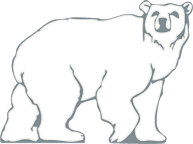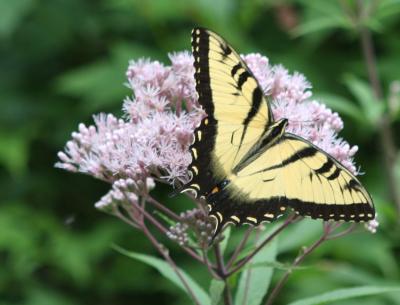- Community
- Services
-
Your Government
-
Column 1
- Agendas and Minutes
- Mayor & City Council
- Boards & Commissions
- City Charter
- City Projects
- City Calendar
Column 2
Column 3
-
Pollinators
Animal pollinators play a critical role in flowering plant reproduction and in the production of most fruits and vegetables. Most plants require the assistance of pollinators to produce seeds and fruit. About 80% of all flowering plants and over three-quarters of our staple food crops rely on animal pollinators. Bees are one of the most well-known pollinators, but there are a variety of other pollinators including ants, beetles, birds, butterflies, moths and more.
Concerns
Pollinator health is critical to our food system and the diversity of life. There is a concern that nearly all pollinator species are in decline due to a variety of factors including habitat loss, pesticides, pathogens, and parasites. Recent years have seen a dramatic decline in certain insect pollinators such as honey bees, some bumblebee populations, and many butterfly species including monarchs.
White Bear Lake Pollinator Resolution
In April 2016, City Council passed a Pollinator Friendly Resolution to help protect pollinators. The resolution endorses pollinator safe policies and practices such as using safer alternatives to pollinator-harming pesticides and creating pollinator friendly habitat.
What you can do to help pollinators
Here are a few tips for helping pollinators. For further details, visit the links at the bottom of this page.
- Create pollinator habitat on your property. Some key factors to consider when planning your pollinator garden:
- Plant a variety of flowering plants with bloom times from April through October
- Plant native plants. Native plants are most beneficial because pollinators have evolved with these plants over thousands of years, developing unique and interdependent relationships.
- Include native larval host plants. For example, plant milkweed for Monarch caterpillars.
- Purchase pollinator plants (and seeds) that have not been treated with neonicotinoids (a group of systemic insecticides).
- Minimize or eliminate pesticide use. Research suggests a strong link between colony collapse disorder and neonicotinoid insecticides.
- Become involved with local non-profit organizations. Pollinator Friendly Alliance and Wild Ones, Big River Big Woods Chapter are examples of local organizations dedicated to protecting pollinators and promoting native plants.
- Participate in citizen science. Submit sightings of bumble bees to bumblebeewatch.org, and search out other projects.
- Add your garden to the pollinator map. Include your existing pollinator garden on the White Bear Lake Pollinator Pathways map.
White Bear Lake Pollinator Pathways Map
The White Bear Lake Environmental Advisory Commission (EAC) shares in the concern over the decline in animal pollinators. To combat pollinator loss, the EAC is working towards increasing pollinator friendly natural habitat in the city by creating “pollinator pathways” where pollinators have pesticide-free corridors of habitat spanning both public and private properties.
White Bear Lake Interactive Pollinator Map - Submit your pollinator garden!
An important first step in developing pollinator pathway corridors is to identify the type and location of existing public and private pollinator friendly gardens in the city. The White Bear Lake interactive pollinator map shows the location of pollinator plants on public and private property. The EAC encourages residents and businesses with existing pollinator friendly gardens to submit information about their garden for inclusion on the pollinator map.
Other Resources
Creating a pollinator friendly garden
- MN Board of Water and Soil Resources: DIY residential pollinator habitat
- U of M Extension: How to create a pollinator friendly landscape
- U.S. Fish and Wildlife Service: How to build a pollinator garden
Native plants, native plant nurseries, and designers
- Blue Thumb: Resource for native plants, designers, and native plant nurseries
- Wild Ones: List of native plant nurseries and landscape services
- Minnesota Department of Natural Resources: List of native plant nurseries and landscape services
Grant opportunities
Local non-profit pollinator and native plant organizations
- Pollinator Friendly Alliance: provides an extensive list of resources and actions
- Wild Ones: Native Plants, Natural Landscapes Big River Big Wood Chapter: sponsors native plant speakers, events, and garden tours


